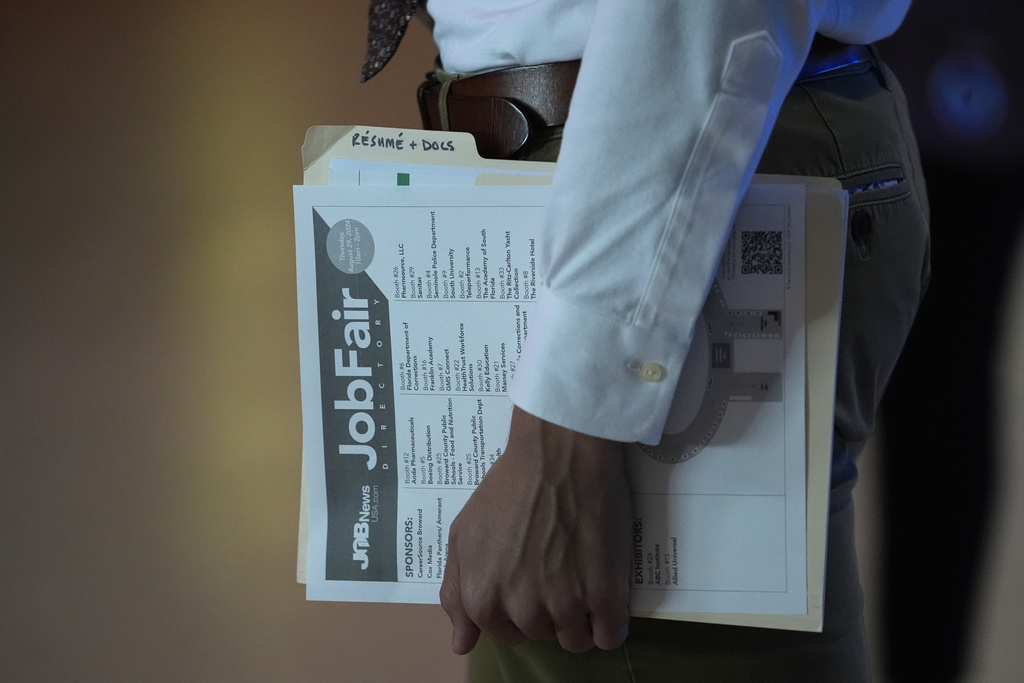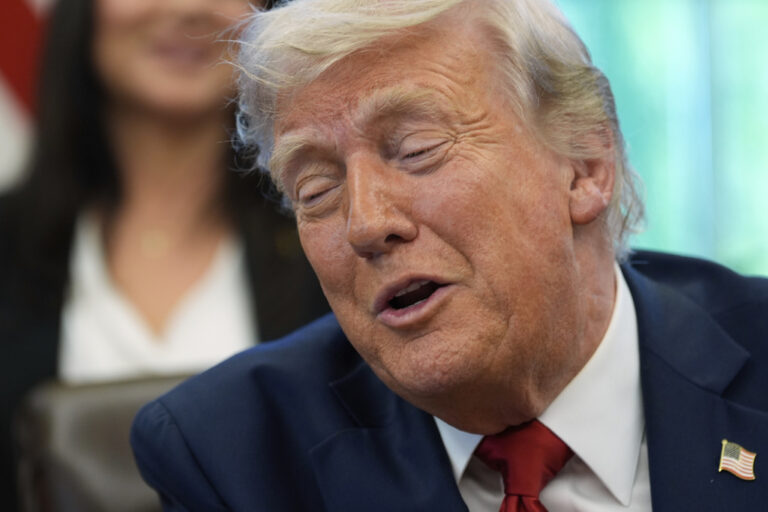U.S. employers added a surprising 228,000 jobs last month, showing that the American labor market was in solid shape as President Donald Trump embarked on a risky trade war with the rest of the world. The unemployment rate ticked up to 4.2%.
The hiring numbers were up from 117,000 in February and were nearly double the 130,000 that economists had expected. Labor Department revisions shaved 48,000 jobs off January and February payrolls.
Workers’ average hourly earnings rose 0.3% from February, about what economists had expected. Compared to a year earlier, hourly pay was up 3.8%, a bit lower than the 4% that had been forecast and nearing the 3.5% year-over-year gains that are seen as consistent with the Federal Reserve’s 2% annual inflation target.
Healthcare companies added almost 54,000 jobs and restaurants and bars nearly 30,000 as the job market bounced back from bitter winter weather in January and February. The federal government lost 4,000, a sign that Elon Musk’s purge of the federal workforce may only be starting to show up in the data.
The unemployment rate rose modestly but for what economists consider a good reason: 232,000 people entered the labor force — which means they were either working or looking for work — though not all of them found jobs right away.
Trump was quick to claim victory, posting on his Truth Social platform that the hiring numbers proved that his policies were “already working.” He also said: ”My policies will never change.”
But economists say the jobs numbers provide a rearview mirror look at the economy and worry about damage going forward from his policies, including the sweeping “Liberation Day’’ import taxes he announced Wednesday. Financial markets have been reeling in the face of his trade wars.
The Dow Jones index plunged 1,000 points at the opening bell Friday after China announced retaliatory tariffs against the U.S. That followed a 1,600-point drop on the previous day. The Dow, S&P and Nasdaq have tumbled 5% to nearly 7% this week, wiping out billions in worth for U.S. companies.
“This could be the high water mark as we go into spring,’’ said Diane Swonk, chief economist at the accounting giant KPMG. Economic uncertainty remains high, she said. “Do the tariffs hold? Does the trade war escalate? How disorderly do markets get? There’s a lot of things in play right now.”
Other economic threats come from Trump’s firings of federal workers and the cancelling of government contracts and his promise to deport millions of immigrants who are working in the United States illegally. In the past several years, those workers have eased labor shortages and helped the economy keep growing. If they’re deported or frightened out of the job market, companies could have to cut back on what they do or increase wages and raise prices, potentially feeding inflation.
The job market has cooled from the red-hot hiring days of 2021-2023. Employers added 117,000 jobs in February and 111,000 in January. Not bad but down from monthly averages of 168,000 last year, 216,000 in 2023, 380,000 in 2022 and a record 603,000 in 2021 as the economy surged back from COVID-19 lockdowns.
“The market needed today’s number,” said Seema Shah, Chief Global Strategist, Principal Asset Management. “Everyone knows that economic weakness is coming, but at least we can be reassured that the labor market was robust coming into this policy-driven shock.”
The economy has been remarkably durable in the face high interest rates.
In 2022 and 2023, the Fed raised its benchmark interest rate 11 times to combat inflation. Economists expected the higher borrowing costs to tip the United States into recession. But they didn’t. Consumers kept spending, employers kept hiring and the economy kept growing.
Inflation came down – allowing the Fed to cut rates three times last year. But then progress against inflation stalled, forcing the Fed to put off more rate cuts this year.
Now there are increasing worries about the health of the economy. The University of Michigan’s consumer sentiment survey last month showed that two-thirds of American consumers expected unemployment to rise over the next year — the highest reading in 16 years.
“The U.S. economy is in good shape at the start of the second quarter, but the ongoing trade war has increased the risk of near-term recession dramatically,” Ershang Liang of PNC Economics wrote in a commentary Thursday.
(AP)











